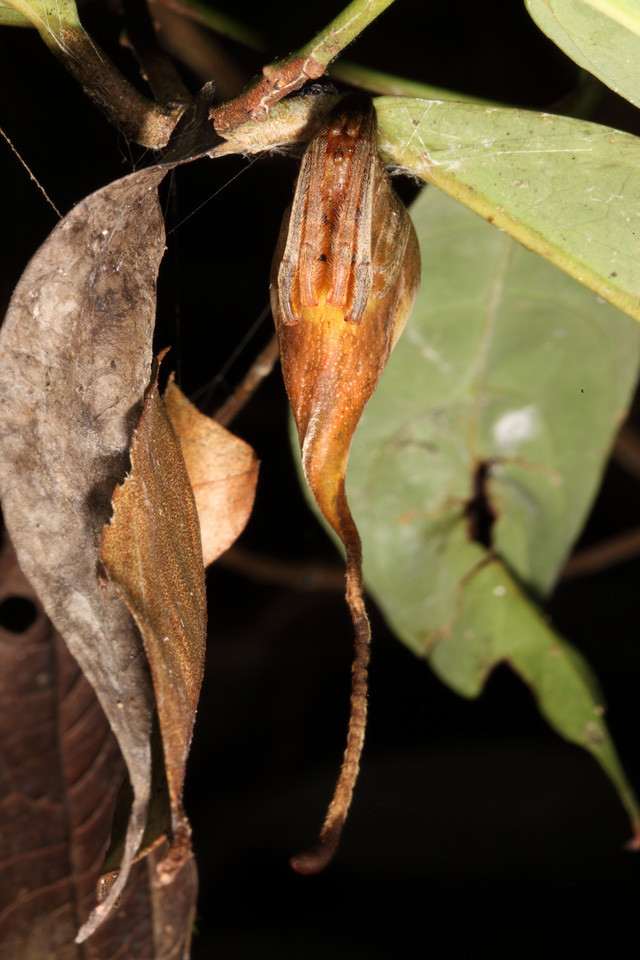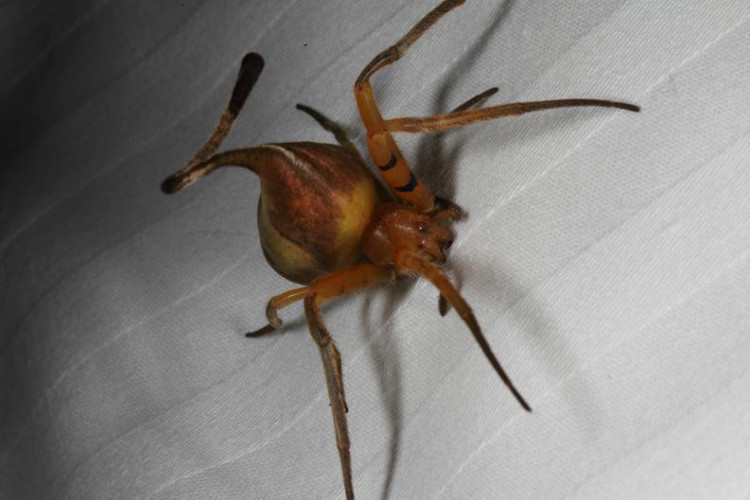Spiders have the ability to turn into amazingly perfect leaves
If you don't own a seasoned eyes and experience, you will never be able to recognize its presence.
Scientists have discovered a unique leaf-shaped spider that has absolute perfect camouflage ability in tropical rain forests and a nesting behavior combined with a leaf to hide in there.
A short document published in the Spiders' Study has a clear and detailed description, which says that the animal was first found in 2011 by a group of scouts. Rainfall in China. At that time they were also going to learn about spiders, but did not focus on this particular breed.

This animal was first found in 2011.
"We have many skills to track spider silk traces even at night, and finally found it in a worthy effort," said Matjaž Kuntner, author of the study.
The first individual found when hanging in a leafy section was also laid by silk, clinging to the branches, causing them to think that it had a habit of collecting fallen leaves on the ground for nesting and camouflage.
"We don't really see that process, but there's probably no other way for this spider to be able to hang leaves on such branches," Kurtner said. " And when we look more closely, we discovered that one of them is not a regular leaf, but a spider."
Its predominant color is dark brown on a belly and pale green on the back, which looks like a real leaf, not to mention its body shape also has curving, slender and protruding lines. concave like leaves. If you are not an experienced expert, you will certainly not be sensitive enough to recognize the extraordinarily small legs that protrude from your head.

This is indeed a new way for them to hide or hunt.
Although many species of spiders have been reported to have the appearance of tree or stem branches, the leaves have not had a similar case. This is indeed a new way for them to hide or hunt.
Another discovery journey has also been drawn up to find more living specimens of this spider, to make their research process more complete. " Its habit and habitat not only helps to evade enemies, but also scientists," Kurtner describes.
- How to identify harmful spiders on plant leaves?
- Spotted spiders transform into bird droppings
- Turn leaves into creativity 'no one expected
- The artificial leaf has the ability to turn sunlight into medicine
- Special technology leaves the leaves after a few hours
- Wolf spiders have the ability to release silk from ... legs
- Mechanism to catch spooky prey of spiders
- How do hornets turn spiders into zombies?
- Video: Poisonous spider eating bat
- Spiders re-solidify and birds
- Artificial leaves can photosynthesis 'just like', both eliminating CO2 and creating both oxygen and fuel
- Spotted spiders know to 'fly' in South America
 Animal 'suffering' after hibernation
Animal 'suffering' after hibernation Why do goats climb well?
Why do goats climb well? Scientists were surprised to see chimpanzees eating turtles
Scientists were surprised to see chimpanzees eating turtles Giant catfish died deadly due to drought in Thailand
Giant catfish died deadly due to drought in Thailand Showing off a photo of a mini 'watermelon', the couple was unexpectedly praised by experts for their luck
Showing off a photo of a mini 'watermelon', the couple was unexpectedly praised by experts for their luck  Spiders can lure male fireflies into their nets with their 'love calls'
Spiders can lure male fireflies into their nets with their 'love calls'  Darwin's bark spider spins silk to 'build a bridge' 25m long
Darwin's bark spider spins silk to 'build a bridge' 25m long  'Army' of thousands of crabs stacked under the sea
'Army' of thousands of crabs stacked under the sea  Being 'pregnant' but not pregnant, dubbed a creature from hell but it's harmless
Being 'pregnant' but not pregnant, dubbed a creature from hell but it's harmless  The strangest spider on Earth: Not living in trees, but preferring to dive into the water, weaving silk to catch fish to eat
The strangest spider on Earth: Not living in trees, but preferring to dive into the water, weaving silk to catch fish to eat 